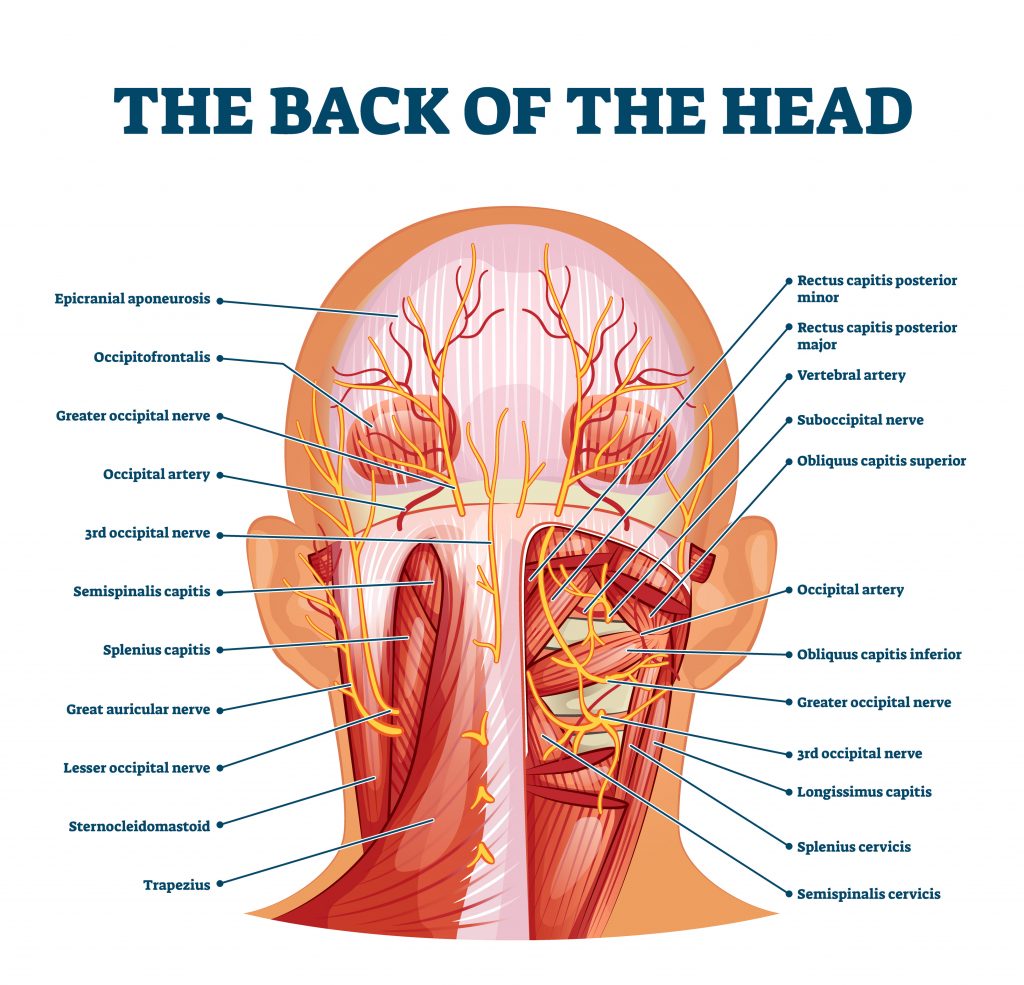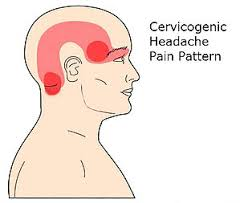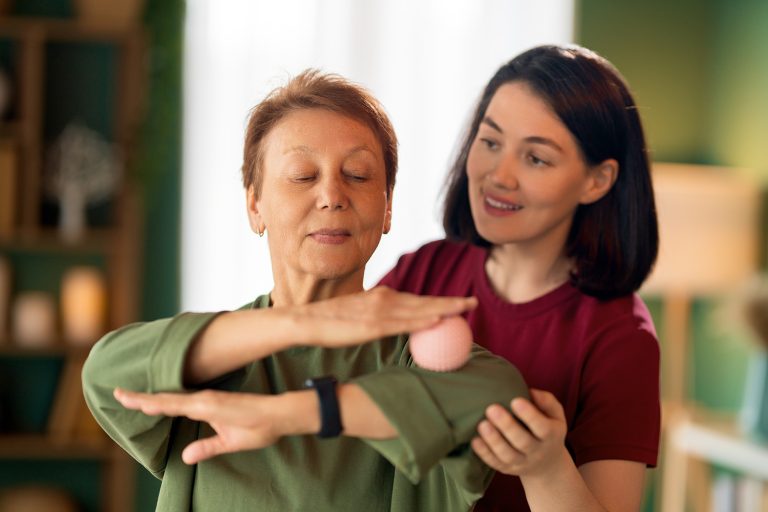

How Neck Pain and Headaches Can Be Related
What are headaches?
Headaches are a very common symptom in the world today with over 50% of the world’s population reporting headaches that occur each year1. Headaches can occur from a variety of reasons that range from very rare and serious such as a stroke or extremely high blood pressure to very mild and common such as seasonal allergies or a cold. One of the more common types of headaches are related to the neck. These types of headaches are called cervicogenic headaches. They arise due to poor posture, neck injuries, inflammation or issues with the nerves in the upper neck. They are different from migraines in that migraines are typically caused by a chemical or hormonal issue in the body. Migraines may present with an aura and audio/visual sensitivity. The best choice for migraine treatments are rest and medication.
Cervicogenic Headaches
Headaches that arise due to issues in the neck are the most common type of headache. Sometimes these are called tension headaches or postural headaches. To fully understand a cervicogenic headache we need to look at anatomy. The nerves that provide sensory information to the head come from the upper neck (specifically C1 and C2). These nerves exit the spinal column through a small opening at each spinal level called a “foramen” and they proceed through an area called the “suboccipital triangle”. This is a triangle made of muscles that help turn and lean your head. If either the foramen or the suboccipital triangle muscles are compromised, then they may end up putting pressure on the C1 (suboccipital nerve) or C2 (greater occipital nerve) nerve. This may result in a headache.


How can I tell if it’s a cervicogenic headache?
It is important to differentiate a tension headache from something more serious. Headaches from more serious causes may be associated with one or more of the following symptoms (red flags): dizziness, double vision, trouble swallowing, trouble speaking, fainting, nausea or vomiting. If you have a headache with one of these symptoms then it is a good idea to notify your doctor. Cervicogenic headaches will present usually on one side vs both and will come from the back of the head to the top of the face in what is called a “ram’s horn” presentation. This type of headache usually gets worse later in the day and are associated with poor posture while sitting. Sometimes the headache is better OR worse when you move your neck to one side or the other. Laying down or taking anti inflammatories may help relieve the pain to a degree.
What can a Physical Therapist do for my headaches?
First of all, a good physical therapist will assess your headache and make sure it is safe for you to proceed toward treatment. If any of the aforementioned red flags are spotted then we will work with your doctor to ensure that the headache is not something more sinister. If it is safe then your physical therapist will look at your posture, neck and shoulder range of motion, neck and shoulder strength and any type of movements that reproduce your headache pain. We use this information to treat any of the limitations that we find which may be contributing to your pain. Usually, your physical therapist will find a combination of poor posture, poor neck stabilization strength, poor head on neck movement and overactive shoulder muscles. All of these findings may put increased pressure on the structures that surround the suboccipital and greater occipital nerves. Your physical therapist will work with you with a hands on approach to strengthen any of these weak points while actively decreasing your pain.
What can I do in the meantime?
If you believe you are dealing with a cervicogenic headache then keep moving. Take breaks from prolonged computer use and prolonged sitting postures. During these breaks make sure to move and lightly stretch the neck in all planes. Try to limit continuous sitting to less than 1 hour per session.
Please Share
categories
Recent Posts
categories

How Neck Pain and Headaches Can Be Related
What are headaches?
Headaches are a very common symptom in the world today with over 50% of the world’s population reporting headaches that occur each year1. Headaches can occur from a variety of reasons that range from very rare and serious such as a stroke or extremely high blood pressure to very mild and common such as seasonal allergies or a cold. One of the more common types of headaches are related to the neck. These types of headaches are called cervicogenic headaches. They arise due to poor posture, neck injuries, inflammation or issues with the nerves in the upper neck. They are different from migraines in that migraines are typically caused by a chemical or hormonal issue in the body. Migraines may present with an aura and audio/visual sensitivity. The best choice for migraine treatments are rest and medication.
Cervicogenic Headaches
Headaches that arise due to issues in the neck are the most common type of headache. Sometimes these are called tension headaches or postural headaches. To fully understand a cervicogenic headache we need to look at anatomy. The nerves that provide sensory information to the head come from the upper neck (specifically C1 and C2). These nerves exit the spinal column through a small opening at each spinal level called a “foramen” and they proceed through an area called the “suboccipital triangle”. This is a triangle made of muscles that help turn and lean your head. If either the foramen or the suboccipital triangle muscles are compromised, then they may end up putting pressure on the C1 (suboccipital nerve) or C2 (greater occipital nerve) nerve. This may result in a headache.


How can I tell if it’s a cervicogenic headache?
It is important to differentiate a tension headache from something more serious. Headaches from more serious causes may be associated with one or more of the following symptoms (red flags): dizziness, double vision, trouble swallowing, trouble speaking, fainting, nausea or vomiting. If you have a headache with one of these symptoms then it is a good idea to notify your doctor. Cervicogenic headaches will present usually on one side vs both and will come from the back of the head to the top of the face in what is called a “ram’s horn” presentation. This type of headache usually gets worse later in the day and are associated with poor posture while sitting. Sometimes the headache is better OR worse when you move your neck to one side or the other. Laying down or taking anti inflammatories may help relieve the pain to a degree.
What can a Physical Therapist do for my headaches?
First of all, a good physical therapist will assess your headache and make sure it is safe for you to proceed toward treatment. If any of the aforementioned red flags are spotted then we will work with your doctor to ensure that the headache is not something more sinister. If it is safe then your physical therapist will look at your posture, neck and shoulder range of motion, neck and shoulder strength and any type of movements that reproduce your headache pain. We use this information to treat any of the limitations that we find which may be contributing to your pain. Usually, your physical therapist will find a combination of poor posture, poor neck stabilization strength, poor head on neck movement and overactive shoulder muscles. All of these findings may put increased pressure on the structures that surround the suboccipital and greater occipital nerves. Your physical therapist will work with you with a hands on approach to strengthen any of these weak points while actively decreasing your pain.
What can I do in the meantime?
If you believe you are dealing with a cervicogenic headache then keep moving. Take breaks from prolonged computer use and prolonged sitting postures. During these breaks make sure to move and lightly stretch the neck in all planes. Try to limit continuous sitting to less than 1 hour per session.
Please Share







